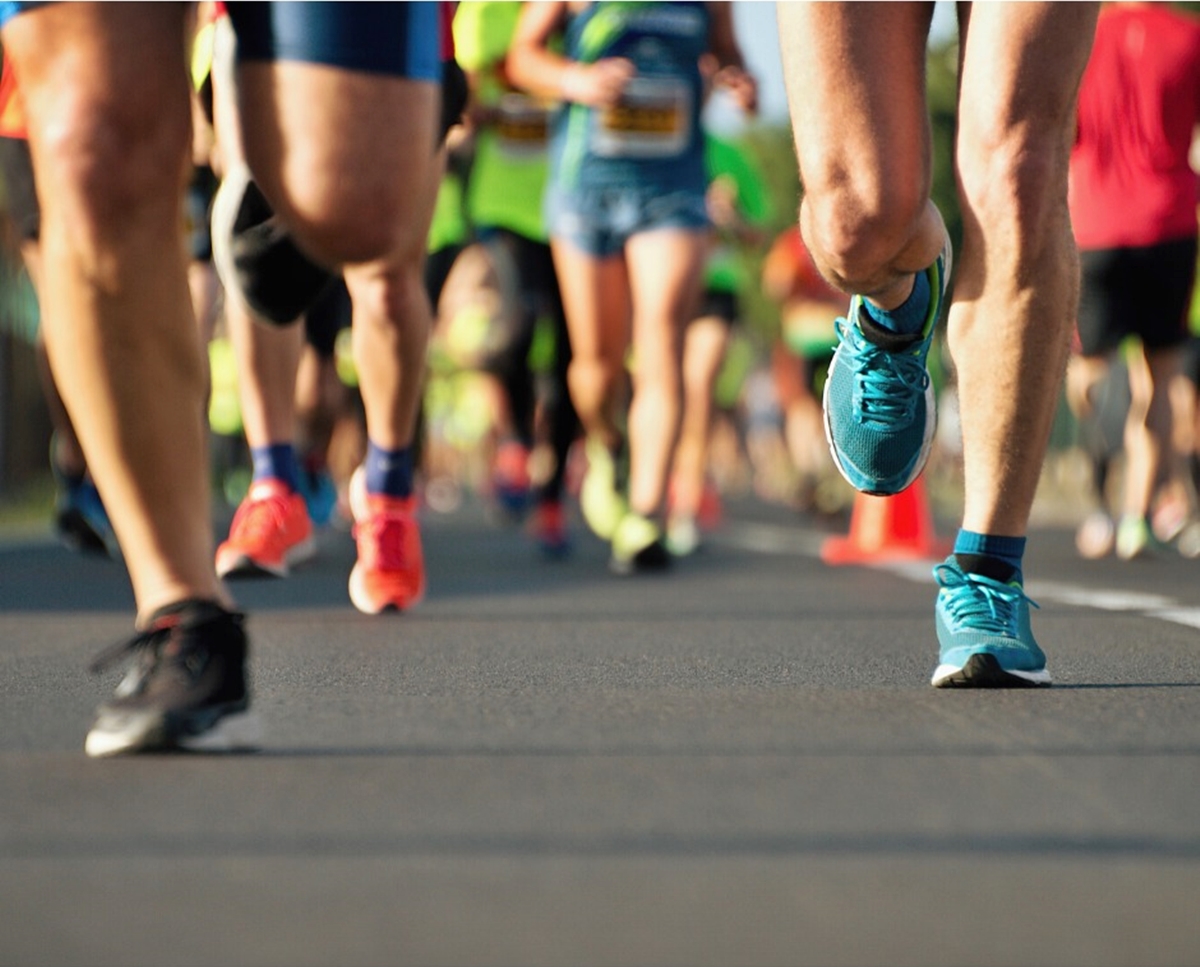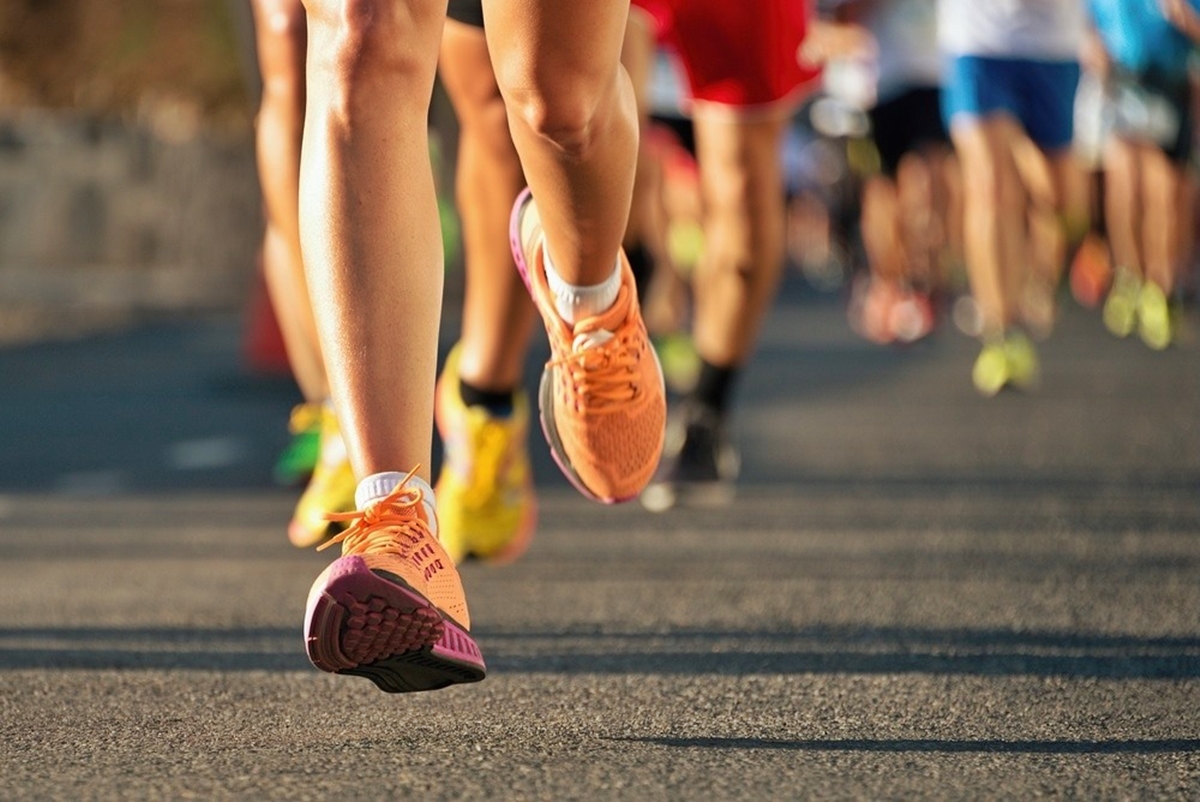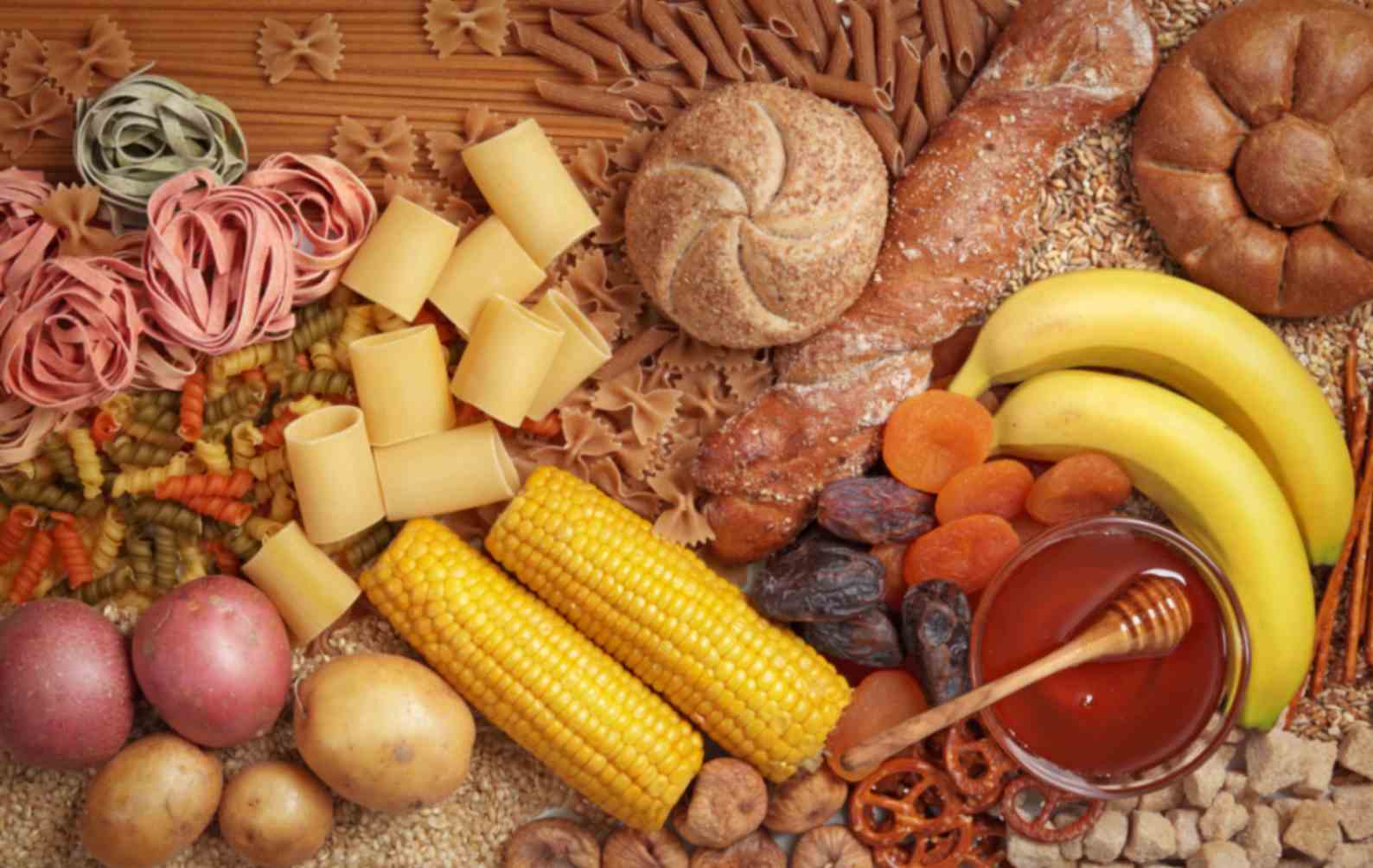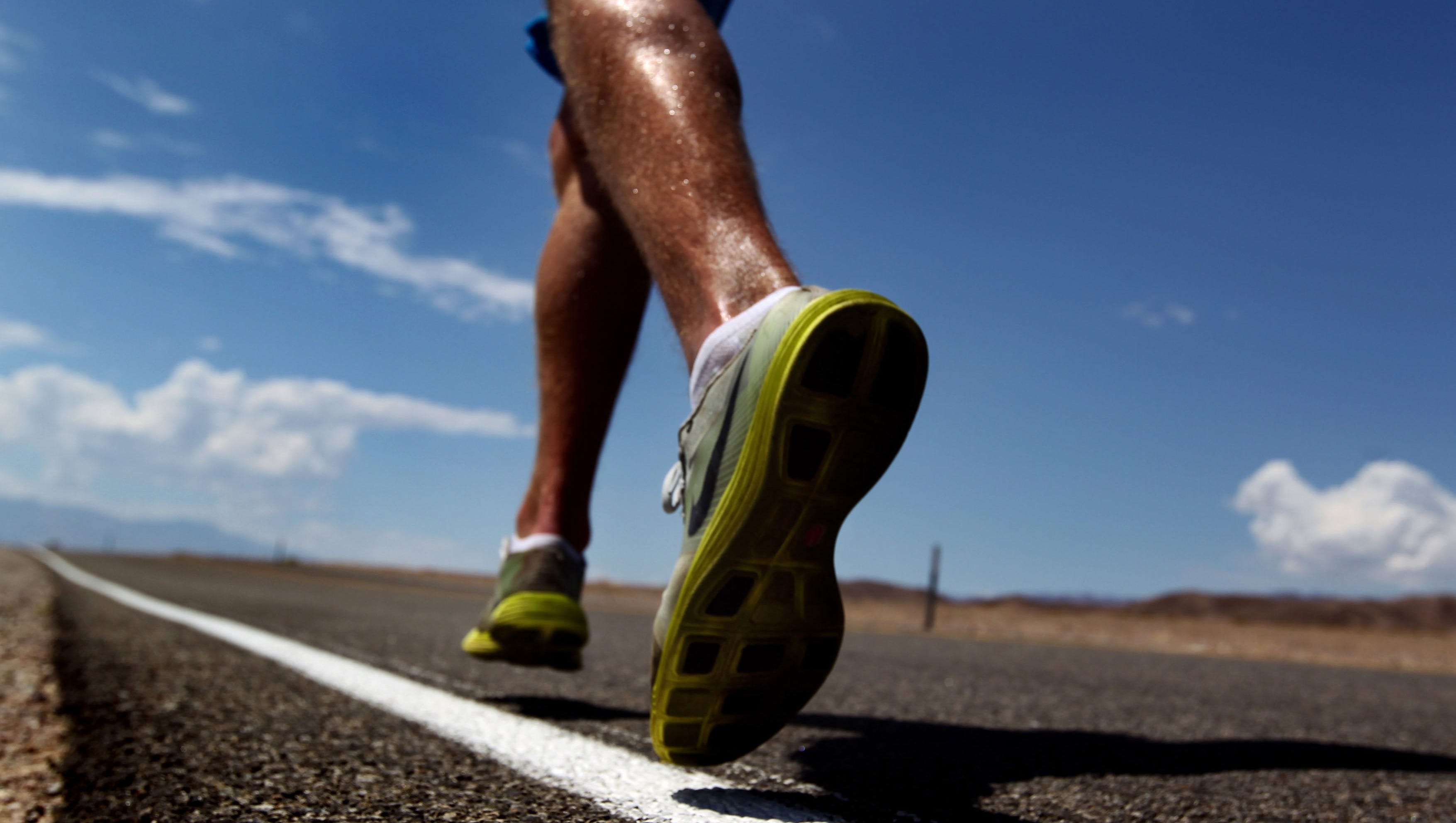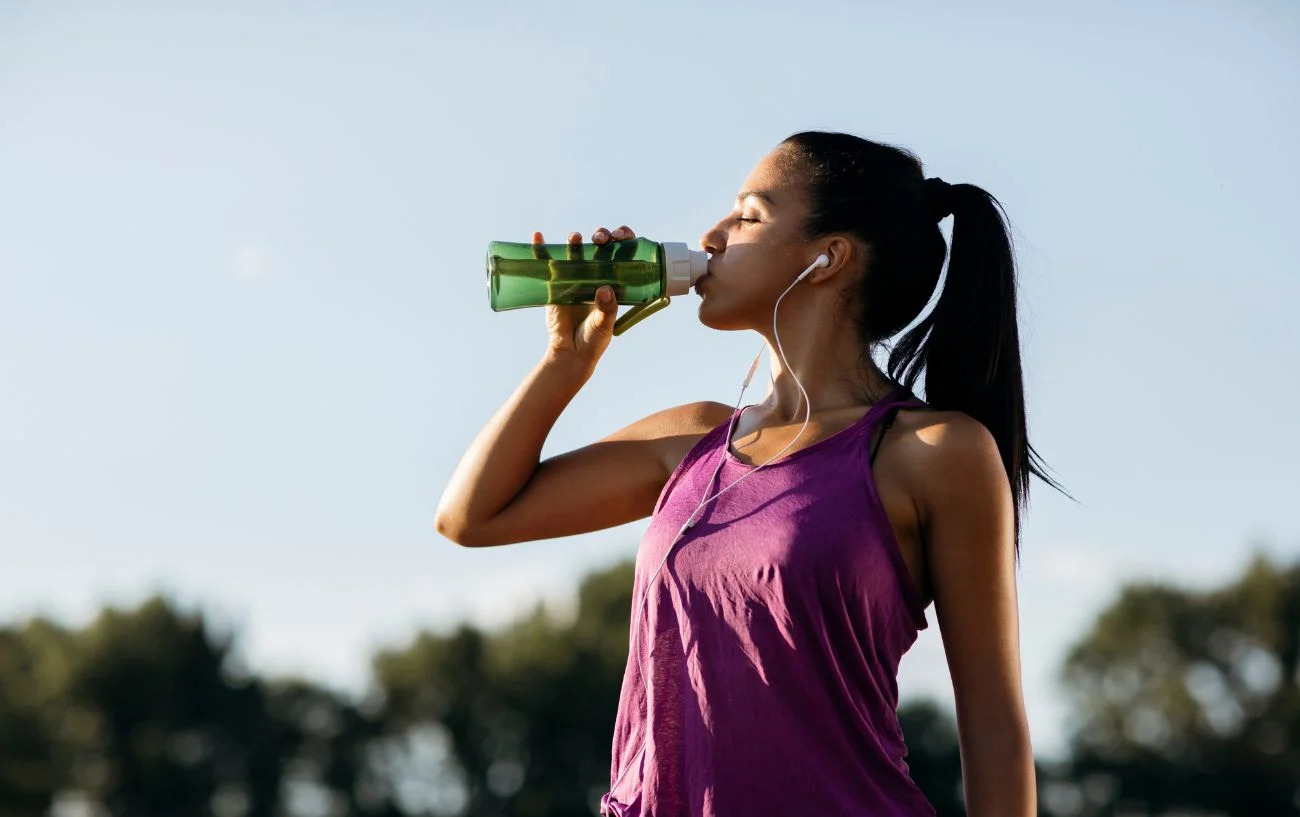

Featured
How To Fuel For A Half Marathon
Modified: January 2, 2024
Get the fueling strategies you need to excel in your next half marathon. Read our featured guide on how to properly fuel for maximum performance.
Introduction
Preparing for a half marathon requires more than just building up your endurance and training your muscles. Proper fueling and nutrition play a vital role in ensuring you have the energy and stamina to conquer the race. Whether you’re a seasoned runner or a beginner, understanding how to fuel your body for a half marathon is essential for optimal performance.
When it comes to running long distances, your body relies on glycogen stores in the muscles and liver for fuel. However, these glycogen stores are limited and can become depleted during a half marathon, leading to fatigue and a decline in performance. This is where strategic pre-race nutrition and during-race fueling come into play.
The purpose of this article is to provide you with valuable insights and practical tips on how to fuel for a half marathon. We will cover everything from pre-race nutrition and hydration strategies to during-race fueling options and post-race recovery fuel. By following these guidelines, you will be able to optimize your energy levels, maintain your pace, and achieve your running goals.
It’s important to note that nutrition and fueling strategies can vary from person to person, so it’s essential to experiment and find what works best for you. It’s recommended to consult with a registered dietitian or nutritionist to tailor your fueling plan to your specific needs and dietary preferences.
Now, let’s delve into the details of proper fueling for a half marathon so you can maximize your performance on race day.
Importance of Proper Fueling for a Half Marathon
Proper fueling is crucial for a half marathon because it provides the energy needed to sustain endurance and performance throughout the race. When you fuel your body with the right combination of nutrients, you optimize glycogen stores, prevent muscle fatigue, and maintain mental focus.
Without adequate fueling, you run the risk of hitting the proverbial “wall” or experiencing a significant drop in energy levels during the race. This can lead to a decline in performance, slower pace, and even potential injury.
One of the key goals of fueling for a half marathon is to ensure that your body has enough glycogen to sustain your effort. Glycogen is the primary fuel source for muscles during endurance exercise, and it is stored in limited amounts in the muscles and liver. By consuming carbohydrate-rich foods and fluids before and during the race, you can top up your glycogen stores and delay fatigue.
Furthermore, proper fueling helps maintain blood glucose levels, which are important for brain function and muscular coordination. When blood glucose levels drop too low, you may experience dizziness, confusion, and difficulty concentrating, all of which can hinder your performance and enjoyment of the race.
It’s also worth noting that proper fueling is vital for muscle recovery and repair after the race. Endurance exercise, such as running a half marathon, places stress on the muscles and depletes energy stores. Consuming the right nutrients post-race helps replenish glycogen stores, repair damaged muscle tissue, and promote faster recovery.
Overall, proper fueling for a half marathon is essential to optimize performance, sustain energy levels, and prevent hitting the wall. By giving your body the fuel it needs, you can push through the challenging moments and achieve your best race results.
Pre-Race Nutrition
Proper pre-race nutrition sets the foundation for a successful half marathon. The goal is to fuel your body with easily digestible carbohydrates, moderate amounts of protein, and minimal amounts of fat and fiber. This combination provides the necessary energy without weighing you down or causing digestive discomfort during the race.
The timing of your pre-race meals is crucial. Ideally, you should aim to have your last substantial meal 2-4 hours before the start of the race. This allows enough time for digestion and prevents gastrointestinal issues during the run. However, it’s essential to experiment with timing during your training to find what works best for your body.
Your pre-race meal should consist of primarily carbohydrates, with a small amount of protein and healthy fats. Good carbohydrate sources include whole grains, fruits, and vegetables. For protein, lean sources such as chicken, fish, or plant-based options like tofu or legumes are ideal. Avoid heavy, greasy, or high-fiber foods that may cause gastrointestinal distress.
Aim to consume 200-300 grams of carbohydrates in your pre-race meal. This can be achieved through a combination of foods like oatmeal with berries and a side of yogurt, a banana with nut butter, or a rice bowl with grilled chicken and vegetables.
Additionally, it’s important to stay hydrated before the race. Start drinking plenty of fluids the day before the race and continue to hydrate leading up to the start time. However, avoid excessive fluid intake immediately before the race to prevent the need for bathroom breaks during the run.
Experiment with different pre-race meals during your training to find what works best for you. Pay attention to how your body feels after each meal and make adjustments as needed. Remember, everyone’s nutritional needs are unique, so listen to your body and trust your instincts.
By fueling your body with the right pre-race nutrition, you’ll set yourself up for optimal performance and a successful half marathon.
Timing of Pre-Race Meals
The timing of your pre-race meals plays a crucial role in ensuring adequate fueling without any digestive discomfort. It’s important to find the right balance between eating early enough to allow for digestion and not eating too early that you feel hungry during the race.
Generally, it’s recommended to have your last substantial meal 2-4 hours before the start of the half marathon. This allows enough time for proper digestion and absorption of nutrients. However, keep in mind that this timing may vary depending on your individual preferences and tolerance.
For those who prefer to eat closer to the start time, a smaller snack or light meal 1-2 hours before the race can be sufficient. This can include easily digestible carbohydrate sources like a banana, energy bar, or a sports drink.
Timing your pre-race meal also depends on the size of the meal. If you’re eating a larger meal, it’s best to allow for the full 3-4 hours to ensure complete digestion. On the other hand, if you’re consuming a smaller snack or liquid meal, 1-2 hours may be sufficient.
It’s important to note that everyone’s digestive system functions differently. Experimenting with different timing and meal sizes during your training runs can help you determine what works best for your body. Pay attention to how you feel during those runs and make adjustments accordingly.
In addition to the timing of your pre-race meal, it’s also crucial to consider the timing of your pre-race hydration. It’s best to start hydrating the day before the race and continue to drink fluids leading up to the start time. However, avoid excessive fluid intake immediately before the race to prevent the need for bathroom breaks during the run.
Remember, the goal of timing your pre-race meal is to allow for proper digestion and avoid any digestive discomfort during the race. Finding the right timing that works for your body will ensure optimal performance and energy levels during your half marathon.
Pre-Race Meal Ideas
When it comes to choosing the right pre-race meal, it’s important to focus on easily digestible carbohydrates, moderate amounts of protein, and minimal fat and fiber. Here are some pre-race meal ideas that can provide the necessary energy without weighing you down:
- Oatmeal with Berries and Yogurt: Start your morning with a bowl of oatmeal topped with fresh berries and a dollop of yogurt. Oatmeal is a great source of complex carbohydrates, while the berries provide natural sugars for quick energy. The yogurt adds a creamy texture and a boost of protein. Avoid adding excessive amounts of sweeteners or heavy toppings.
- Fruit and Nut Butter: For a quick and easily digestible option, grab a banana or apple and pair it with a tablespoon of nut butter. This combination provides a good balance of carbohydrates, healthy fats, and some protein. Nut butters like almond or peanut butter add a satisfying creaminess and additional flavor.
- Whole Wheat Toast with Turkey and Avocado: Toast a slice or two of whole wheat bread and top it with lean deli turkey slices and some avocado. Whole wheat bread offers complex carbohydrates, while turkey provides protein, and avocado contributes healthy fats. This balanced meal will provide sustained energy without causing any digestive discomfort.
- Rice Bowl with Grilled Chicken and Vegetables: If you prefer a heartier meal, a rice bowl loaded with grilled chicken and vegetables can be a satisfying option. Opt for brown rice or quinoa for complex carbohydrates, lean grilled chicken for protein, and a mix of colorful vegetables for essential nutrients. Add a drizzle of minimal-fat sauce or dressing for extra flavor.
- Smoothie with Spinach, Banana, and Greek Yogurt: For those who prefer a lighter option, a smoothie can be a convenient pre-race meal. Blend together fresh spinach, a banana, Greek yogurt, and some almond milk. This combination provides hydration, easily digestible carbohydrates, and a dose of protein. You can also add additional ingredients like chia seeds or a scoop of protein powder for extra nutrition.
Remember to listen to your body and adjust these meal ideas based on your preferences and dietary restrictions. It’s essential to test different pre-race meals during your training to find what works best for your digestion and energy levels. Stay hydrated, fuel up with the right nutrients, and you’ll be ready to conquer your half marathon with confidence.
Hydration Strategies
Proper hydration is essential for optimal performance in a half marathon. Dehydration can lead to reduced endurance, muscle cramps, and decreased cognitive function. It’s crucial to develop effective hydration strategies to ensure you maintain fluid balance throughout the race.
Here are some key hydration strategies to consider:
- Start Hydrating Early: Begin hydrating the day before the race by increasing your fluid intake. Aim to drink at least 8-12 cups (64-96 ounces) of fluids throughout the day. Focus on water, sports drinks, and hydrating foods like fruits and vegetables.
- Monitor Urine Color: Pay attention to the color of your urine to assess your hydration status. Light yellow urine indicates proper hydration, while dark yellow or amber-colored urine may indicate dehydration. Aim for pale yellow urine as a general guideline.
- During Training Runs: Use your training runs as an opportunity to practice your hydration strategy. Experiment with different fluids and determine what works best for you. Carry a handheld water bottle or use hydration belts or hydration backpacks to have access to fluids during your runs.
- Hydration Stations: Familiarize yourself with the locations of hydration stations on the race route. Plan your hydration strategy accordingly. Determine how many stations you will use and whether you will opt for water or sports drinks offered at each station.
- Personal Hydration System: If you prefer to have full control over your hydration, consider using a personal hydration system. This can be a handheld water bottle, a hydration vest, or a hydration backpack with a bladder. Practice using your preferred system during training to ensure comfort and convenience.
- Hydration Mix or Sports Drinks: If you prefer to consume sports drinks during the race, consider mixing a hydration powder with water in advance. This allows you to control the concentration and customize the flavor according to your preference. Experiment with different brands and flavors during training runs to find what works best for you.
- Monitor Your Thirst Levels: Pay attention to your thirst levels during the race. Sip fluids when you feel thirsty but avoid excessive drinking, as this can lead to overhydration. Overhydration can cause hyponatremia, a potentially dangerous condition where blood sodium levels become abnormally low.
- Post-Race Hydration: Replenish your fluid stores post-race by consuming water and electrolyte-rich beverages. Include some sodium-rich foods in your post-race meal to restore electrolyte balance. Monitor your urine color and continue hydrating until your urine returns to a pale yellow color.
Remember, hydration needs vary from person to person, so it’s important to listen to your body and adjust your hydration strategy accordingly. By practicing and fine-tuning your hydration plan during training, you can ensure proper fluid balance and optimize your performance on race day.
During-Race Fueling Options
During a half marathon, it’s important to fuel your body with appropriate nutrition to sustain energy levels and maintain performance. Utilizing during-race fueling options can help replenish glycogen stores and delay fatigue. Here are some fueling options to consider:
- Energy Gels: Energy gels are a popular choice for many runners due to their convenience and quick absorption. They provide a concentrated source of carbohydrates and sometimes include electrolytes or caffeine. It’s recommended to consume gels with water to aid in digestion and absorption.
- Energy Chews: Energy chews are small, bite-sized chewable candies that contain carbohydrates and electrolytes. They are an alternative to energy gels and provide a similar source of fuel. Chews are easy to carry and can be consumed gradually throughout the race.
- Sports Drinks: Many races provide sports drinks at hydration stations along the course. Sports drinks contain carbohydrates and electrolytes to replenish both fluid and energy levels. If you prefer a liquid source of fuel, consider consuming sports drinks offered during the race.
- Fruit: Some runners prefer natural sources of fuel, such as bananas, oranges, or energy bars made with real fruit. These options provide carbohydrates, vitamins, and minerals while offering a refreshing taste. Choose easily digestible fruits to avoid any digestive discomfort.
- Pretzels or Salted Snacks: As you sweat during the race, you lose essential electrolytes, including sodium. Consuming pretzels or salted snacks can help replenish sodium levels and prevent muscle cramps. This option works well for those who prefer savory flavors during the run.
- Homemade Fuel: If you prefer a more personalized approach, you can create your own fueling options. Homemade energy balls or bars made with a mix of carbohydrates, protein, and healthy fats can be a tasty and nutritious choice. Experiment with different recipes during your training runs to find your favorite combination.
It’s crucial to practice your during-race fueling strategy during your training runs to understand how your body responds. Test different fueling options, timing, and quantities to find what works best for you. Remember to drink water along with your fuel to aid in digestion and maintain hydration.
Lastly, while it’s important to fuel your body during the race, be mindful of not consuming too much, as it can lead to digestive issues. Listen to your body’s signals and adjust your fueling strategy accordingly. The goal is to maintain steady energy levels and avoid any gastrointestinal discomfort that can hinder your performance.
Choosing the Right Energy Gels or Chews
Energy gels and chews provide a concentrated source of carbohydrates and are popular choices for fueling during a half marathon. With numerous options available, it can be overwhelming to choose the right ones. Here are some factors to consider when selecting energy gels or chews:
- Carbohydrate Content: Look for gels or chews that have a sufficient amount of carbohydrates. Aim for around 20-30 grams of carbohydrates per serving. This will provide the necessary fuel to sustain energy levels during the race.
- Composition: Check the ingredient list to ensure the gels or chews are made with easily digestible carbohydrates such as maltodextrin or glucose. Avoid products that contain excessive amounts of added sugars or artificial ingredients.
- Flavors and Texture: Taste preference plays a significant role in fueling during a race. Select flavors that you enjoy, as it will make consumption more pleasant. Consider the texture as well and choose options that you find easy to chew or swallow during your runs.
- Added Electrolytes and Caffeine: Some energy gels or chews contain added electrolytes or caffeine. Electrolytes like sodium and potassium can help replenish what you lose through sweat. Caffeine can provide an extra boost of energy and improve mental focus. Determine if these additional features are beneficial for your race performance.
- Convenience and Portability: Look for gels or chews that are easy to carry and consume while running. Consider packaging that allows for easy opening, minimal mess, and quick access. Some products come in easy-to-squeeze packets or resealable pouches, making them practical for on-the-go fueling.
- Price and Availability: Evaluate the cost of energy gels or chews and compare it with your budget. Consider the availability of the product as well, as you may need to purchase them in bulk for training and race day. Look out for discounts or sales to save some money.
It’s important to try different brands and flavors of energy gels or chews during your training runs to determine which ones work best for your digestion, taste preferences, and energy needs. Pay attention to how your body responds to each type and make adjustments as necessary.
Remember, what works for one runner may not work for another, so it’s essential to find the energy gels or chews that suit your individual needs. The key is to select products that provide the carbohydrates and nutrients necessary to sustain your energy levels and help you perform at your best during the half marathon.
Hydration Tips during the Race
Proper hydration is vital for maintaining performance and preventing dehydration during a half marathon. Here are some essential hydration tips to help you stay hydrated during the race:
- Take Advantage of Hydration Stations: Familiarize yourself with the locations of hydration stations along the race route. Plan ahead and know how many stations you will encounter. Grab a cup of water or sports drink at each station and sip as you continue running.
- Alternate Water and Sports Drinks: Many races offer both water and sports drinks at hydration stations. Consider alternating between the two to replenish both fluid and electrolyte levels. Water helps with hydration, while sports drinks provide carbohydrates and electrolytes for energy and nutrient replenishment.
- Don’t Wait to Feel Thirsty: Thirst is a sign of dehydration, so it’s essential to drink regularly and not rely solely on thirst cues. Set a hydration schedule where you take sips of fluids at regular intervals, regardless of whether you feel thirsty or not.
- Sip, Don’t Guzzle: When drinking from a cup or bottle, take small sips instead of trying to gulp down a large amount at once. This allows for easier digestion and minimizes the risk of bloating or stomach discomfort.
- Avoid Excessive Drinking: While hydration is essential, be mindful not to excessively drink fluids during the race. Overhydration can lead to a condition called hyponatremia, where blood sodium levels become dangerously low. Drink enough to quench your thirst and maintain hydration, but avoid excessive intake.
- Practice Hydration Strategy During Training: Use your training runs to practice your hydration strategy. Experiment with different amounts and timing of fluids to find what works best for you. This will help you develop a routine and ensure optimal fluid intake on race day.
- Carry Your Own Hydration: If you prefer to have full control over your hydration, consider using a handheld water bottle, a hydration vest, or a hydration belt. This allows you to have fluids readily available without relying solely on hydration stations.
- Consider Weather Conditions: Adjust your hydration strategy based on the weather conditions on race day. Hot and humid weather increases fluid loss through sweat, so you may need to increase your fluid intake to compensate for that.
- Monitor Urine Color: Pay attention to the color of your urine after the race. Pale yellow urine indicates proper hydration, while dark yellow or amber-colored urine may suggest dehydration. Use this as a rough guideline to assess your hydration levels.
Remember, hydrating properly during the race is crucial for maintaining energy levels and preventing dehydration. Develop a hydration plan that works for you, and practice it during your training runs to fine-tune your strategy. By staying hydrated, you’ll be able to perform at your best and enjoy the journey of running a half marathon.
Post-Race Recovery Fuel
The period immediately following a half marathon is crucial for replenishing your body’s nutrient stores and aiding in muscle recovery. Consuming the right post-race recovery fuel can help restore glycogen levels, repair damaged muscle tissue, and promote faster recovery. Here are some essential tips for post-race recovery fuel:
- Hydrate: Rehydrate your body by drinking fluids after the race. Water is essential for replenishing fluid levels, while electrolyte-rich beverages can help replace lost minerals. Focus on rehydrating before turning to other recovery foods.
- Carbohydrate-Rich Foods: Consume carbohydrates within 30 minutes to an hour after the race to replenish glycogen stores. Choose easily digestible carbohydrate sources like fruits, whole grains, and sports drinks. Aim for a combination of complex and simple carbohydrates to provide sustained and quick energy.
- Protein for Muscle Repair: Include protein in your post-race recovery fuel to stimulate muscle repair and growth. Opt for lean protein sources like chicken, turkey, fish, tofu, or plant-based options like beans and lentils. Aim for about 15-25 grams of protein to support muscle recovery.
- Healthy Fats: Incorporate healthy fats into your recovery meal to promote satiety and aid in nutrient absorption. Include sources like avocados, nuts, seeds, or a drizzle of olive oil. Be mindful of portion sizes, as fats are higher in calories.
- Antioxidant-Rich Foods: Consume foods high in antioxidants to help reduce inflammation and support recovery. Include colorful fruits and vegetables like berries, dark leafy greens, and citrus fruits. These provide essential vitamins, minerals, and phytonutrients.
- Moderate Fiber Intake: While fiber is important for overall health, consuming excessive amounts of fiber immediately after a race may cause digestive distress. Opt for moderate amounts of fiber-rich foods like whole grains, fruits, and vegetables to support digestion without overwhelming your system.
- Supplements: Consider incorporating supplements like protein powders or branch chain amino acids (BCAAs) to aid in muscle recovery. These can be added to smoothies or consumed separately based on your preference. Consult with a healthcare professional or sports nutritionist for personalized recommendations.
- Post-Race Meal Ideas: Some post-race meal ideas include a chicken or vegetable stir-fry with brown rice, a quinoa salad with roasted vegetables and grilled tofu, or a smoothie with Greek yogurt, fruits, and a scoop of protein powder. Customize your meal based on your preferences and dietary needs.
Remember to listen to your body’s hunger and fullness cues as you refuel. Opt for nutrient-dense foods that provide a balance of carbohydrates, protein, and healthy fats. The post-race recovery fuel you consume plays a crucial role in replenishing your energy stores and facilitating muscle repair to set the stage for future training and races.
Conclusion
Fueling properly for a half marathon is essential for optimal performance, sustained energy levels, and efficient muscle recovery. By following the tips and strategies discussed in this article, you can set yourself up for success on race day.
Before the race, focus on pre-race nutrition, timing your meals appropriately, and consuming a balanced combination of carbohydrates, protein, and healthy fats. Experiment with different pre-race meal options to find what works best for your body and digestion.
During the race, utilize during-race fueling options such as energy gels, chews, or sports drinks to replenish glycogen stores and maintain energy levels. Hydration is also crucial during the race, so make sure to drink at hydration stations and monitor your thirst cues.
Following the race, prioritize post-race recovery fuel to replenish glycogen stores, promote muscle repair, and reduce inflammation. Include carbohydrates, protein, healthy fats, and antioxidant-rich foods in your post-race meal to support your body’s recovery process.
Remember that every runner is unique, and finding the right fueling strategies may require some trial and error. Listen to your body, pay attention to your energy levels and hydration, and make adjustments accordingly. Consulting with a registered dietitian or nutritionist can also provide personalized guidance tailored to your specific needs.
By prioritizing proper fueling and hydration, you can optimize your performance, enhance your endurance, and reach your goals in the half marathon. Enjoy the journey, stay consistent with your training, and fuel your body to maximize your running potential.


